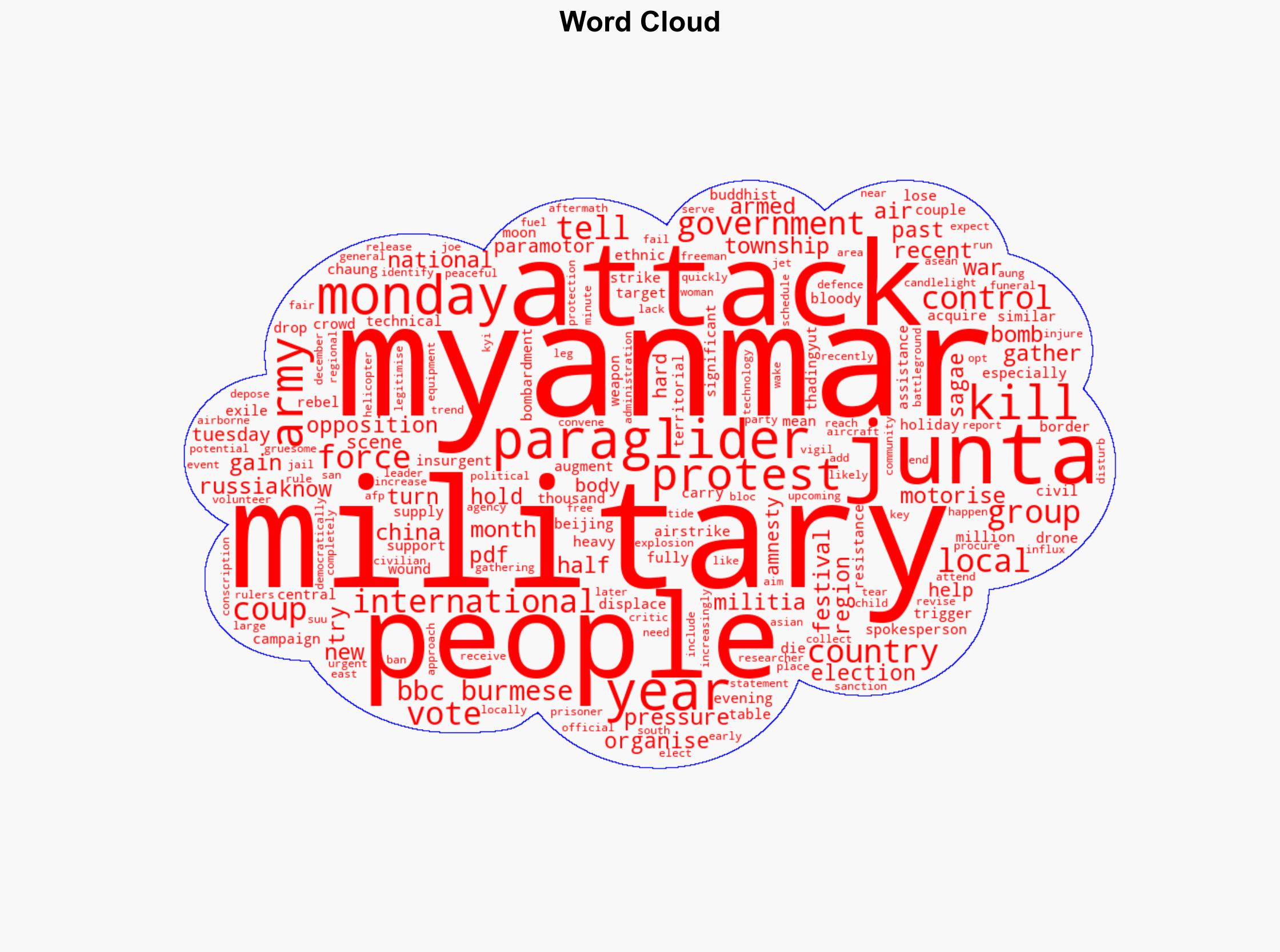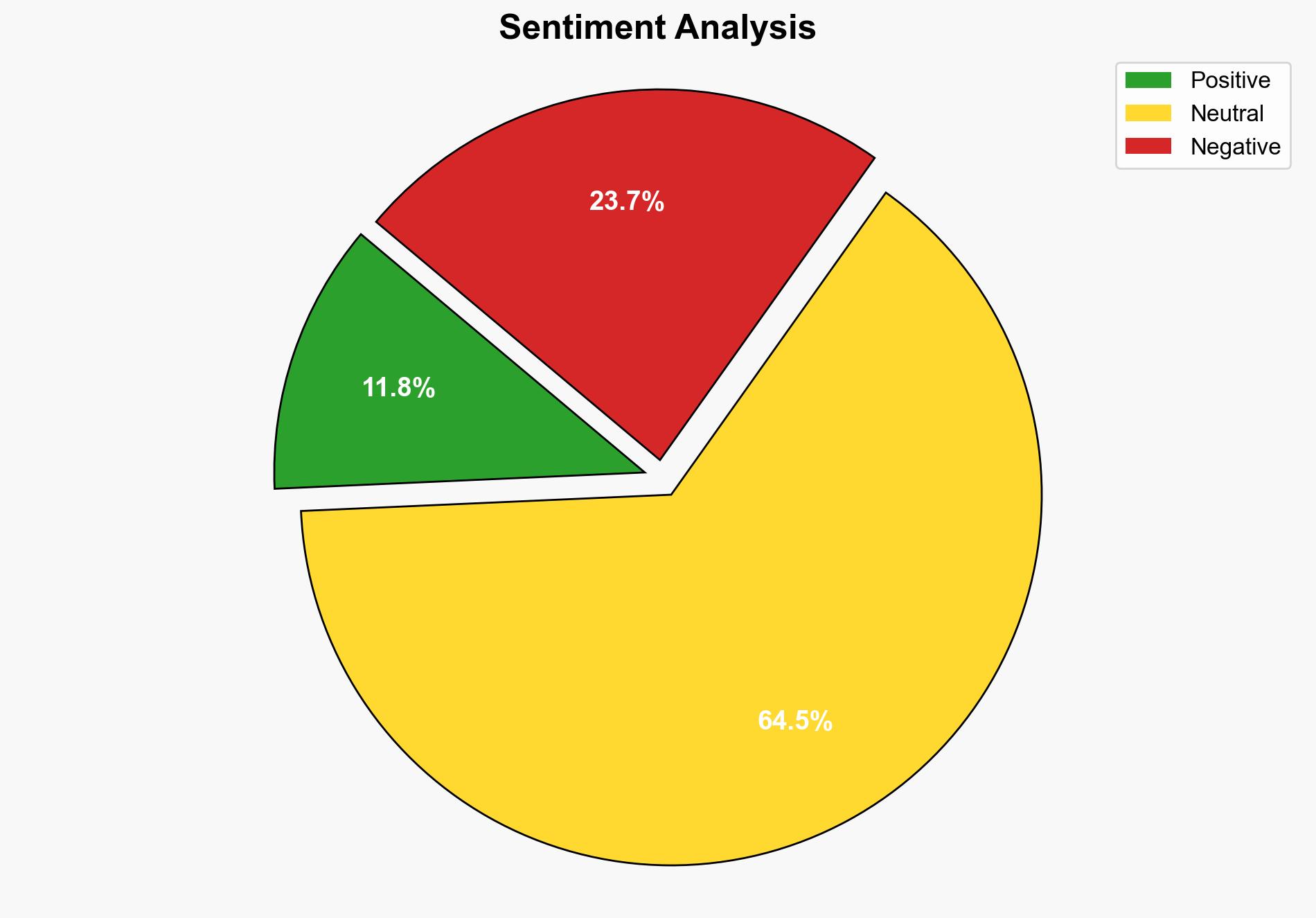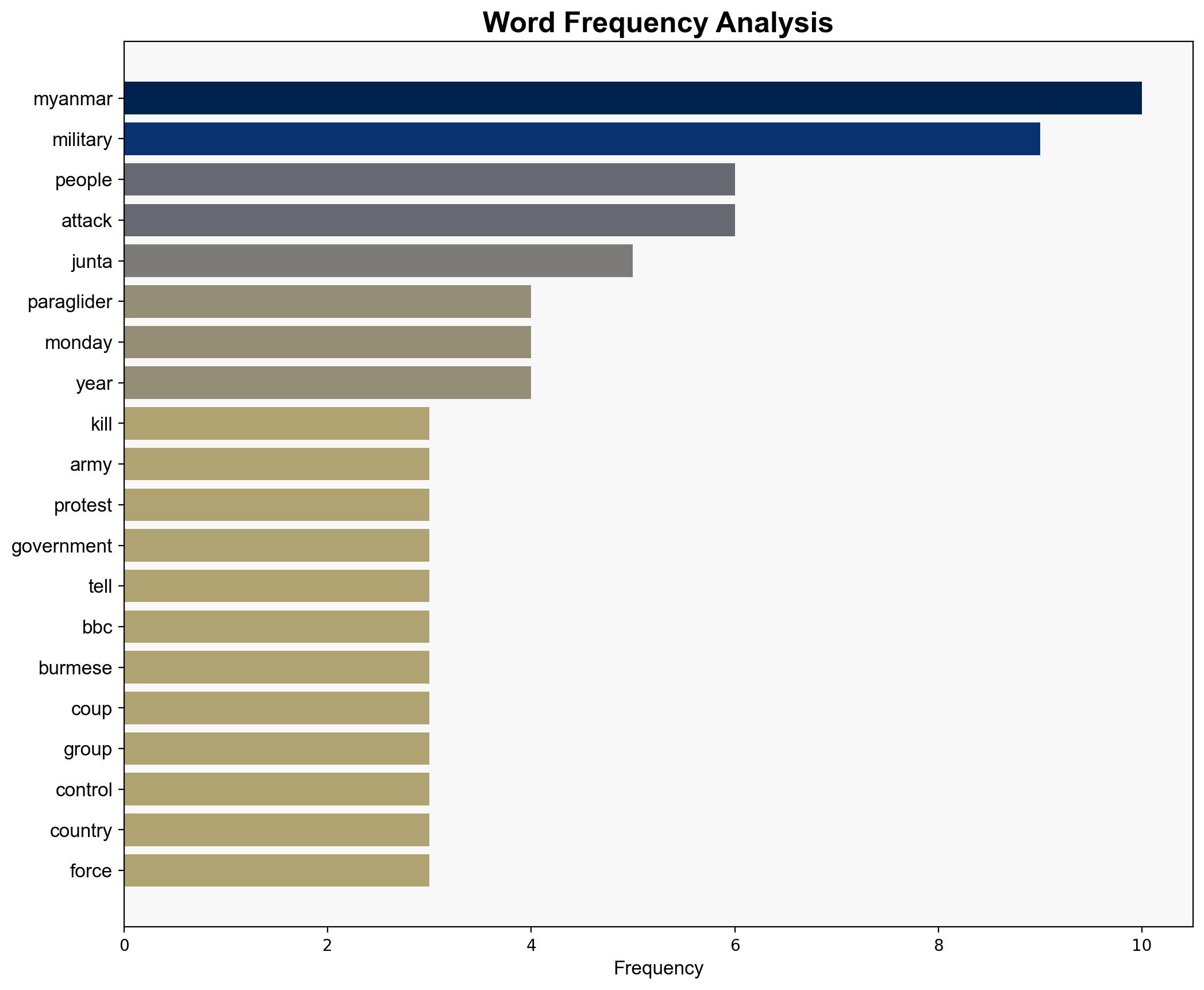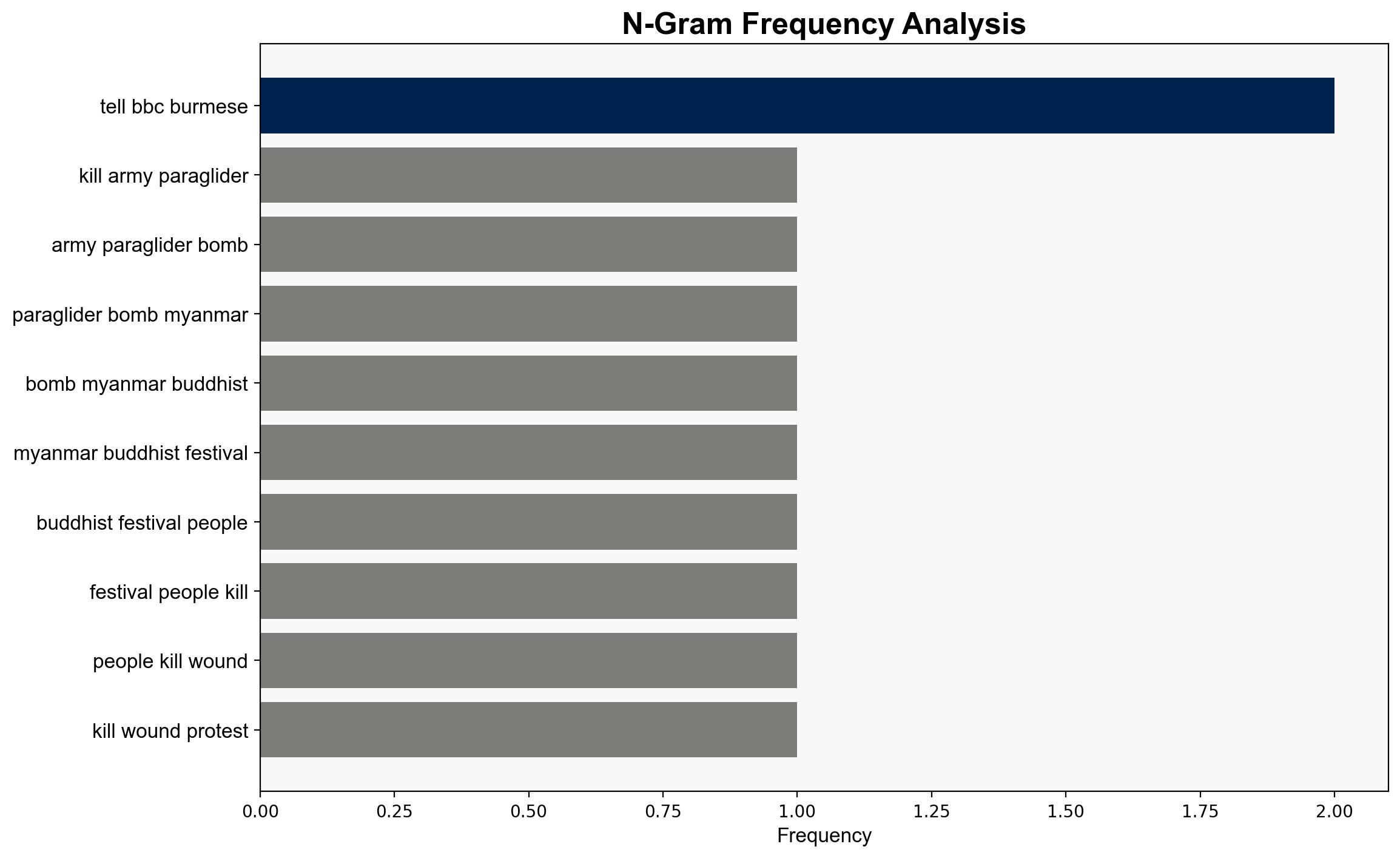At least 24 killed as paraglider drops bombs at Myanmar Buddhist festival – BBC News
Published on: 2025-10-08
Intelligence Report: At least 24 killed as paraglider drops bombs at Myanmar Buddhist festival – BBC News
1. BLUF (Bottom Line Up Front)
The attack at the Myanmar Buddhist festival, involving a paramotor paraglider, suggests a tactical shift by the Myanmar military due to resource constraints and international sanctions. The most supported hypothesis is that the military is adapting its tactics to maintain control amidst growing resistance. Confidence level: Moderate. Recommended action: Increase diplomatic pressure on Myanmar’s military government and enhance support for regional stability initiatives.
2. Competing Hypotheses
1. **Hypothesis A**: The Myanmar military is employing unconventional tactics, such as paramotor paragliders, due to a lack of traditional military resources caused by international sanctions. This indicates a strategic adaptation to maintain control over contested regions.
2. **Hypothesis B**: The attack was orchestrated by an insurgent group to discredit the Myanmar military and gain international sympathy, leveraging the military’s known tactics to create confusion and chaos.
3. Key Assumptions and Red Flags
– **Assumptions for Hypothesis A**: The Myanmar military has limited access to conventional military resources. The use of paragliders is a direct result of these limitations.
– **Assumptions for Hypothesis B**: Insurgent groups have the capability and motive to execute such an attack and frame the military.
– **Red Flags**: Lack of independent verification of the attack details. Potential bias in reports from government and opposition sources.
– **Blind Spots**: Limited information on the exact capabilities and strategies of insurgent groups.
4. Implications and Strategic Risks
The use of unconventional tactics by the military could lead to increased civilian casualties, further destabilizing the region. This may provoke stronger international condemnation and potentially lead to more severe sanctions. Conversely, if insurgents are responsible, it could escalate internal conflict and undermine peace efforts. The psychological impact on the civilian population could lead to increased recruitment for resistance movements.
5. Recommendations and Outlook
- **Mitigation**: Strengthen international diplomatic efforts to pressure Myanmar’s military government. Encourage ASEAN to take a more active role in mediating the conflict.
- **Opportunities**: Support humanitarian efforts to aid displaced civilians and build goodwill among the local population.
- **Projections**:
– **Best Case**: Successful diplomatic intervention leads to a ceasefire and negotiations.
– **Worst Case**: Escalation of violence and further destabilization of the region.
– **Most Likely**: Continued low-intensity conflict with sporadic attacks and international condemnation.
6. Key Individuals and Entities
– Aung San Suu Kyi (imprisoned political leader)
– Amnesty International (monitoring entity)
– ASEAN (regional bloc potentially influencing outcomes)
7. Thematic Tags
national security threats, unconventional warfare, regional stability, international sanctions





